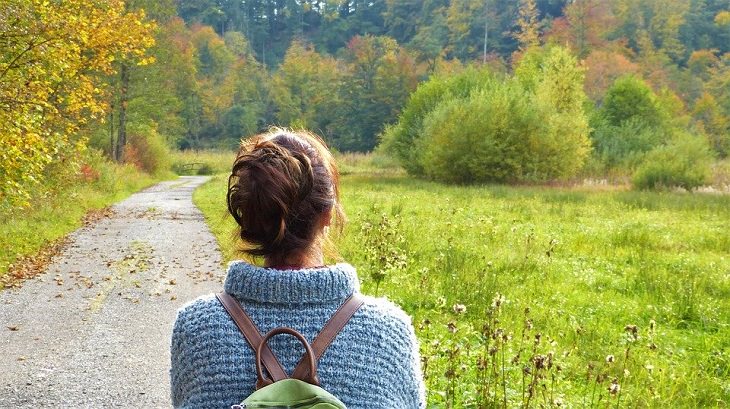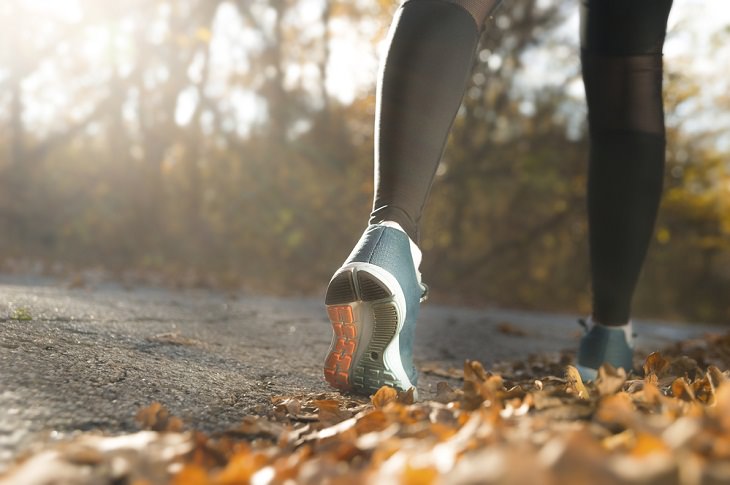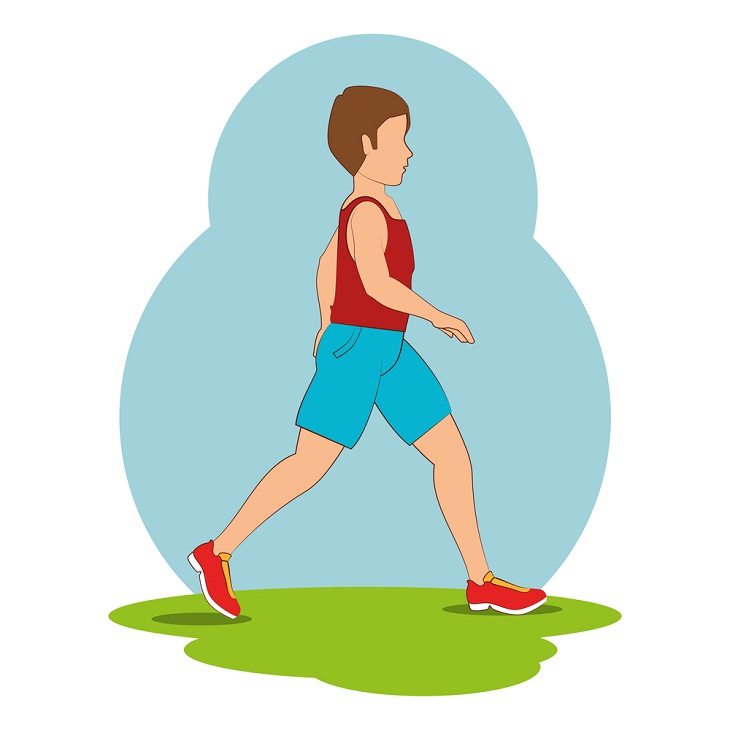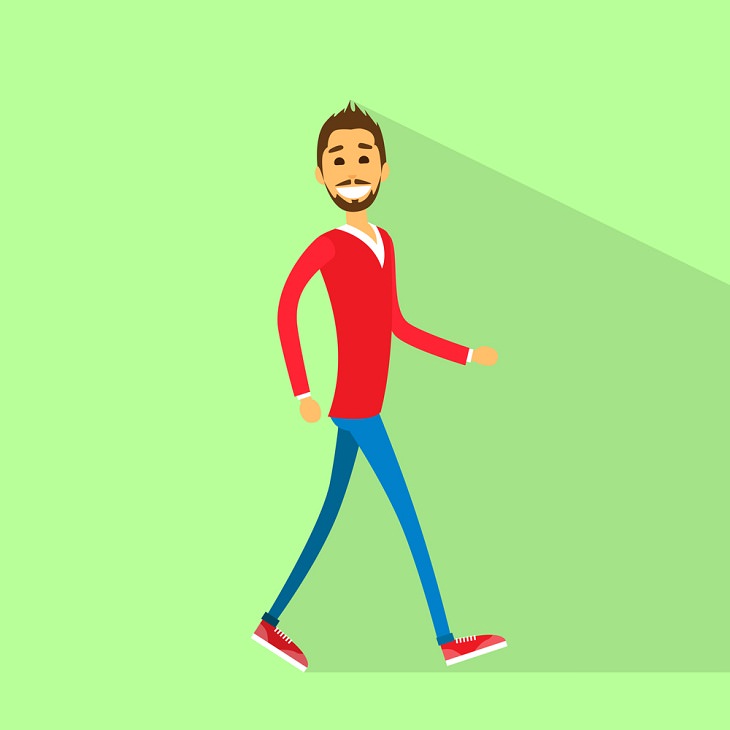One of the cool advantages of walking meditation is that it can be done inside or outside if the area is relatively quiet. It can be the verandah inside your house or the little park outside your place. However, it would better if you avoid steep hills or places where you would be forced to stop regularly. Generally, a lane that allows you to walk back and forth for 10-15 paces without being disturbed would be ideal. Also, the lane doesn’t need to be very long as you don’t have to reach a specific destination through walking meditation.
Now, before you begin walking, do some basic stretches to loosen your body. Your spine should be straight and you should have a good posture before you start. Another good tip is that initially, you should try meditation walking indoors as there would be fewer distractions.
2. Start walking
Once you’ve chosen your spot, you can begin walking. To practice walking meditation properly, first, take 10-15 steps along the lane you’ve chosen while breathing normally. Walk slowly and take small steps. After you have finished your steps, pause, and breathe again. Don’t be in a rush and always take your time. Once you feel comfortable and have finished breathing, take another 10-15 steps in the opposite direction. Continue this process for at least 15 minutes.
If you are not comfortable going back and forth, however, you can also meditate by walking in a straight path. It is crucial to remember here that you are not aiming for a good workout through this routine but are trying to connect to your body and mind.
3. Connect your breathing with your steps
One of the main goals of walking meditation is to create unity between your body and your mind. You can achieve this by following a few instructions regularly. Firstly, breathe in as you take two or three steps. Then, you have to breathe out and take three, four, or five steps. To keep the cycle going, you should alter the number of steps you take with each breath. However, make sure that you don’t stress yourself in doing so. There's shouldn't be any rush. Find what is comfortable for your body and mind.
Remember that it may take you a while to find your rhythm and the pattern that you find convenient. However, your breathing should be slow and relaxed no matter what pattern you adopt.
4. Awareness of your body
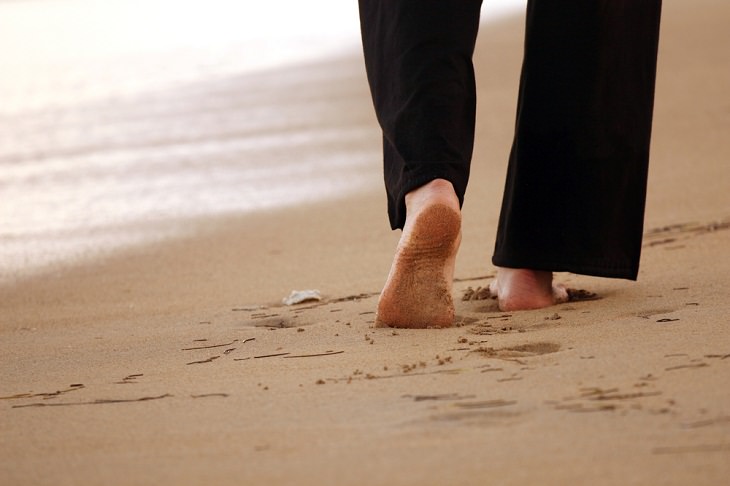
A vital part of walking meditation is to be aware of each part of your body. As you are walking, you should notice how your feet feel when they are touching the ground. Also, take note of how your muscles contract as you take each step and the myriad sensations you feel in each part of your body. Even small things like the changing position of your hip as you lift your leg to take a step or how your arms and shoulders swing as you walk should be observed and felt.
You don’t have to think about these body movements, though. You just need to notice and feel the different sensations in your body as you move. This will allow you to connect with it on a deeper level.
5. Awareness of your feelings
Meditation walking also involves being aware of your feelings. When you are walking, notice if there are things that feel pleasant or unpleasant in your body, or outside of you. There are bound to be a few, surely. When you do notice things that are unpleasant in your body, don’t cling onto them but don’t push them away either. Just take note of them. If there are unpleasant things in the outside world that you notice, allow them to drift by. Don’t follow them or change your gaze for those things.
Keep reminding yourself as you walk that there are no right or wrong feelings. You needn’t fight your sentiments. Instead, accept whatever you feel and let it be a part of your meditation walking experience.
6. Take note of your thoughts and emotions
When you are mediation walking you will experience a range of emotions, too. Your emotions will be affected by what is currently happening in your life. It may be some happiness over a new job or sadness over some other issue. You might also be irritated or anxious about something in your life. Whatever emotions you might be feeling at that point, just observe them and don’t let yourself cling on to them. Allow your thoughts to flow naturally.
Also, notice your mind during this process. Is your mind at peace or are you thinking about things unconnected with this practice? Whether you are experiencing negative or positive thoughts, just notice them without any judgment and focus on your walking.
7. Honing your ability to focus
One of the most difficult things to attain in walking meditation is to be aware of your body, feelings, and emotions. This might feel daunting initially and hence it would be better if you break it down and make it simpler. Start by focusing only on your body at first. Give it time and don’t feel agitated if the focus doesn’t come easily in the beginning. It will take time so you need to keep at it. Once you have become a little comfortable on focusing on your body, you can switch to being aware of your feelings and thoughts. This, too, will take time. The more you practice, the better you will get.
Once you have gotten the hang of it, you can modify your focus based on your needs. For instance, you may want to become more aware of your feelings at a certain point and don’t want to be aware of your body or thoughts. Walking meditation allows you to do that once you practice it regularly and integrate it into your daily life. Over time, with the help of this technique, you will feel that your ability to focus, despite the distractions, keeps improving.
8. Allow yourself to live in the moment
The primary idea behind walking meditation is to allow yourself to live in the moment. You don’t have to reach any destination as you should only focus on the journey of this unique exercise. Live in the moment and forget the past. While you are walking, your mind may wander. Let it do so without feeling anxious. Observe those thoughts and let your mind come back to the present moment, to the present breath, whenever it feels comfortable.
Let yourself be free as you walk and don’t worry about any goal. You will feel light and relaxed with time. As you make this into a habit you will start to learn how to live in the present moment rather than always being worried about the future.

